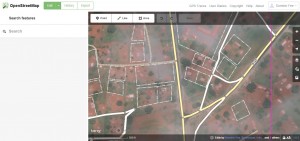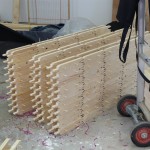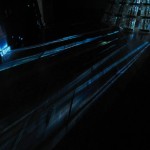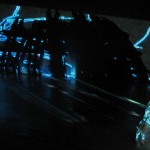http://www.gdcvault.com/play/1021852/Building-Fear-in-Alien
For psychological reasons that I’m rather reluctant to explore, I’m very partial to video games that scare the absolute stuff out of me. It’s no doubt got something to do with the fact that the interactivity of games lends them a particular intensity of immersion that other forms can’t quite reach. The scariest game I’ve ever played is Project Zero II, where at one point, a cup falling off a table at the top of a set of stairs nearly finished me. Creative Assemly’s “Alien Isolation” however, released in 2014, runs it a close second.
This 2015 GDC talk, given by Alistair Hope, the company’s creative director, was a fascinating insight into the game’s development. He showed an early piece of demo footage which ultimately got the game green-lit, seen from a first-person viewpoint aboard the Nostromo spacecraft. Several positives came from the feedback on this demo. These were; the game was about survival – not killing, the player was underpowered an under-prepared in a “pressure cooker” environment, and there was only one alien. The design team was careful to retain these principles during the development of the full game.
An authenticity and respectfulness to the source material was also insisted upon. The development team were given full access to the original 1979 movie’s art assets, and were careful not to include references to any tech after that date. As well as providing a very faithful homage to the movie, this approach also paid off in that the informed player already came with an understanding of the environment as well as the abilities of the main antagonist, adding to the intensity of the experience. There were some crucial aspects to the design of the Alien’s AI. It’sbehaviour was never scripted or predictable, but was at all times sense-driven and reactive to the player’s movement and noise levels. This resulted in some very tense situations when the creature was close by, stalking the area, waiting for the player to panic and move suddenly. This was augmented by some brilliant 3d sound design, in terms of both environmental effects and musical score, which I now realise was designed to fade in and out depending on the creature’s proximity. This I feel counts as a great example of Ian Bogosts’s idea of “procedural rhetoric”. Many computational processes are clearly at work driving the simulation of the monster and its environment, but the affect produced by it all feels very real indeed.
A very enlightening video shows an early build of the game, where the protagonist was shown in third person view, still probably the preferred viewpoint for the genre. It’s amazing the difference this makes to the level of immersion. Being able to see the character’s movements and partially see her face breaks the direct connection with the world. The emotional reactions become hers, not yours. As Alistair Hope himself put it “third person felt like an Alien game, first person felt like Alien.” There was a brief Q&A at the end, which I found a little disappointing. Hope was quite dismissive of a question regarding the length of the game, and whether he felt the intensity of the Alien encounters was compromised by some unnecessary padding in later sections involving different enemy types. Having completed the game I agree with this criticism myself, and feel that the game gets more than enough right to justify a frank discussion of its few failings.





































